In the age of hyper-personalisation, where students expect Amazon-level experiences from colleges, higher education institutions can no longer afford to operate with spreadsheets and siloed systems. Enter the CRM (Customer Relationship Management)—once a corporate sales tool, now a critical engine for student success.
Table Of Contents
- 1Introduction
- 2What Is a CRM for Higher Education, and Why Every Institution Needs One
- 3Benefits of CRM for Higher Education
- 4Choosing the Best Higher Education CRM for Your College or University
- 5How to Select the Best CRM for Higher Education
- 6Tips for CRM Software Implementation in Higher Education
- 7Summary
Introduction
Globally, the Higher Ed CRM market is exploding, projected to grow from $2.1 billion in 2023 to $9.1 billion by 2031, at a CAGR of nearly 15%. Why? Because it’s transforming how universities attract, engage, support, and retain students.

Take Georgia State University—they improved student retention by over 10% using CRM analytics to identify and assist at-risk students early. Or look at Central New Mexico Community College, which boosted retention by 6.8% using CRM-based outreach.
And it’s not just about student success—CRMs are supercharging admissions, too. Hennepin Technical College experienced a 10% increase in enrollment after streamlining recruitment through a CRM.
When integrated with Learning Management Systems (LMS), CRMs offer even greater ROI. Some institutions reported a 22% drop in dropout rates and a 64% increase in retention rates among their first-year cohorts through the use of data-driven nudges and interventions.
From AI-driven insights to real-time engagement tracking, CRMs are reshaping the student journey—from prospect to alum. As digital expectations rise and competition intensifies, one thing is clear: adopting a CRM is no longer a tech upgrade—it’s a strategic necessity.
What Is a CRM for Higher Education, and Why Every Institution Needs One
Let’s define what a CRM (Customer Relationship Management) system for higher education is: a powerful software tool designed to manage and optimise interactions with students throughout their entire journey—from prospect to alumni.
But unlike traditional CRMs used in sales, a Higher Ed CRM is tailored to the unique needs of universities and colleges. It helps institutions track, communicate with, and support prospective students, enrolled learners, faculty, staff, and alumni—all from one centralised platform.
A CRM is important in higher education because it helps colleges and universities deliver personalised, data-driven, and efficient student experiences—across the entire student lifecycle.
Here’s why it’s a game-changer:
1. Boosts Student Enrollment
With real-time data and automated workflows, CRMs streamline the recruitment process. Institutions using CRMs report up to 30% higher applicant engagement and 25% faster admissions decisions.
2. Enhances Communication
Whether it’s sending a welcome email to an applicant or a deadline reminder to an admitted student, a CRM ensures consistent, personalised communication at scale—via email, SMS, chat, or portals.
3. Improves Retention & Student Success
CRMs track student behaviour and flag risks early. Schools like Georgia State University increased retention by over 10% using CRM insights to identify and support at-risk students.
4. Breaks Down Silos
It centralises data from admissions, academics, advising, and alumni services—giving staff a 360-degree view of each student.
5. Increases Operational Efficiency
From automating follow-ups to generating instant reports, CRMs can reduce manual workload and save millions in admin costs over time.
Benefits of CRM for Higher Education
In today’s fast-paced, student-centric education landscape, a CRM isn’t just a “nice-to-have”—it’s mission-critical. From streamlining admissions to boosting retention and enhancing alumni engagement, CRM platforms offer measurable ROI for colleges and universities. Let’s explore how.
1. Streamlined Admissions Process
The traditional admissions process can be chaotic—multiple touchpoints, lost emails, and follow-up fatigue. A CRM fixes that.
With automation features, CRMs handle application tracking, follow-up emails, event invites, and status updates—all in one dashboard. This leads to faster decision-making, higher application conversion rates, and better student experiences. Some universities report up to 25% faster admissions cycles using CRMs.
2. Personalised Student Communication
No more mass emails that feel robotic—CRMs enable institutions to speak directly to students’ needs.
From birthday wishes to deadline reminders, CRMs allow hyper-personalised outreach based on a student’s behaviour, preferences, and progress. This boosts engagement and shows students they’re more than just a number.
3. Improved Retention & Early Intervention
The earlier you know a student is struggling, the better your chances of supporting them.
CRMs flag at-risk students based on attendance, grades, LMS activity, and more—empowering advisors to intervene before it’s too late. Institutions like Georgia State University saw a 10%+ jump in retention thanks to CRM alerts.
4. Data-Driven Decision Making
Gut decisions are out. Smart, data-backed strategies are in.
CRMs centralise data across departments, offering insights on recruitment ROI, student success rates, and campaign effectiveness—helping leaders make informed decisions fast.
5. Stronger Alumni Engagement
The student journey doesn’t end at graduation. CRM helps build lifelong relationships.
Track alumni engagement, donations, event participation, and more. Send tailored newsletters or event invites, and build loyal, connected alumni communities that support future growth.
Choosing the Best Higher Education CRM for Your College or University
Here are the top 6 CRMs dominating the U.S. higher education space—each offering unique strengths to support enrollment, retention, and student success.
1. Salesforce Education Cloud

Used by: Arizona State University, Georgetown University, New York University, BITS Design School
Benefits:
- Manages the full student lifecycle—from recruitment to alumni.
- AI-powered features, such as predictive alerts and chatbots via Einstein.
- Integrates with LMS (e.g., Canvas) and SIS systems.
Impact: BITS Design School saw a 70% jump in applications and a 17% rise in enrollments, all via automated lead workflows and 360° student profiles.
Read more: Salesforce for Higher Education: Benefits, Drawbacks, and How to Use It Effectively
2. Slate by Technolutions
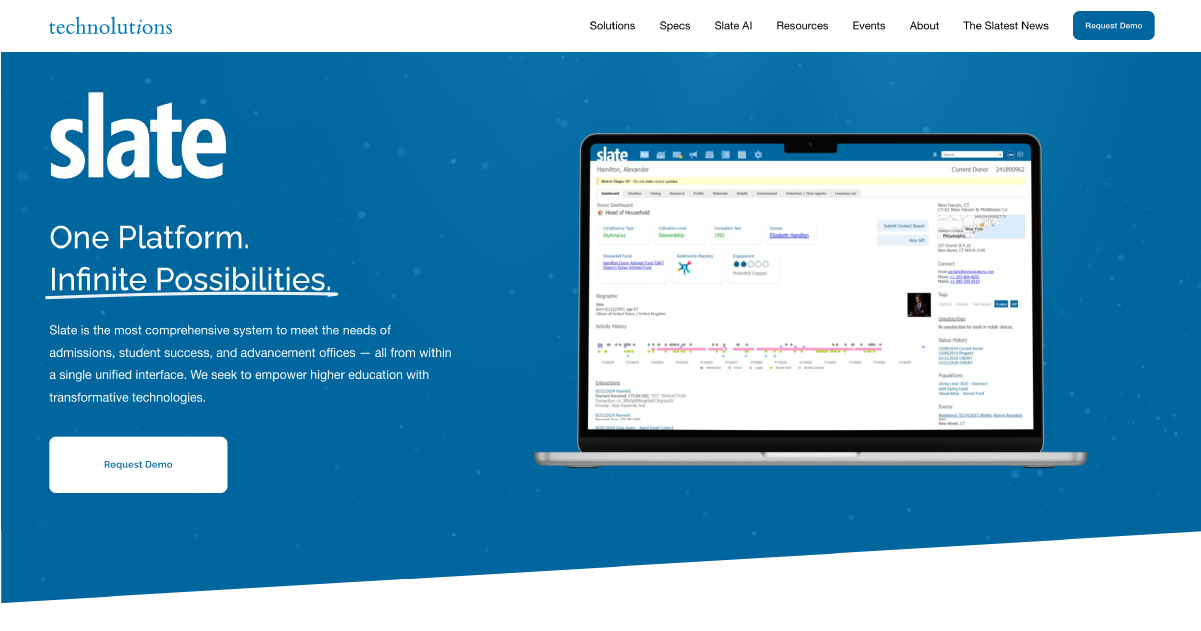
Used by: MIT, Yale, 1,200 other colleges
Strengths:
- Tailored for admissions management with document tracking and configurable review workflows.
- Automates deadlines and reduces manual tasks by 40%.
Why it matters: Preferred by institutions with complex admissions pipelines for its granular control.
3. Element451
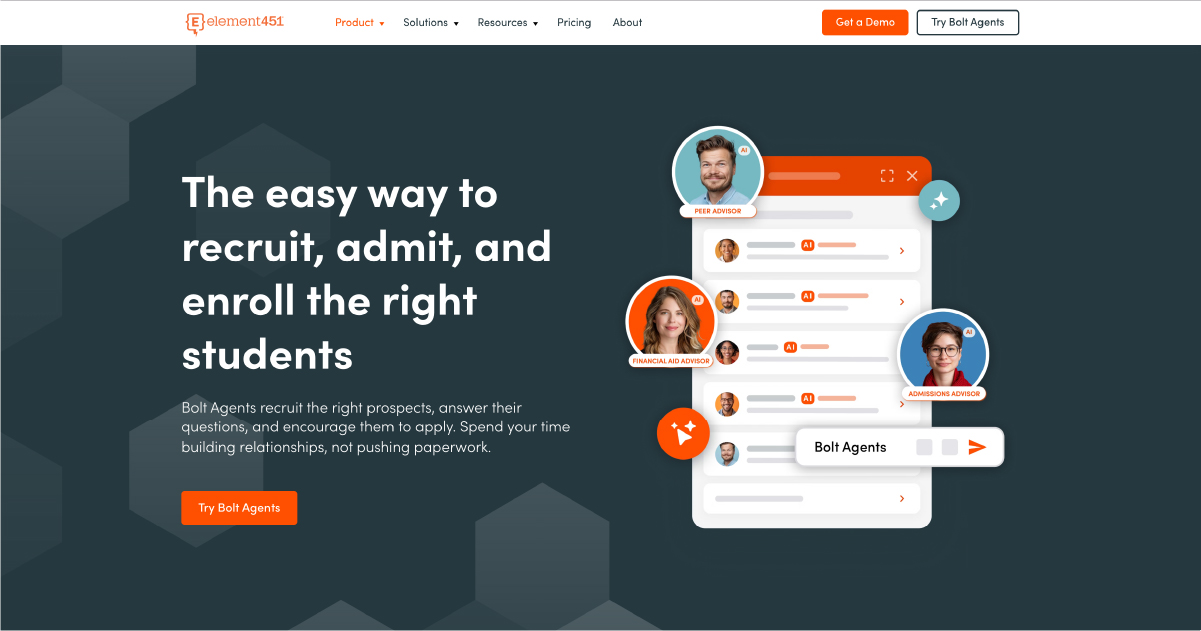
Real-world wins:
- Forsyth Technical Community College: +12% enrollment
- Abraham Baldwin Agricultural College: +3.5% freshman boost
- Texas State Technical College: raised conversion rates from 25% to nearly 90% application completion.
Features: AI-powered personalisation, chatbots, dynamic microsites, and intelligent workflow automation.
4. TargetX (Salesforce ecosystem)
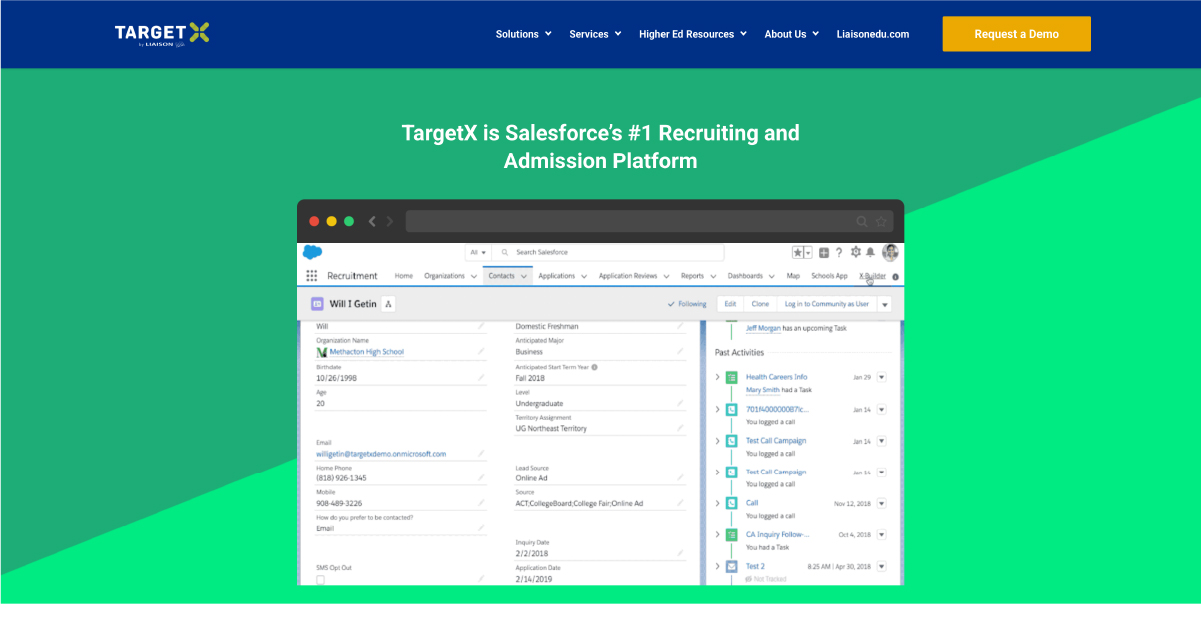
Used by: Georgetown University and 400+ institutions
Advantages:
- Tools for event management, geo-targeted recruitment campaigns, and mobile-first engagement.
- Reported 25% boost in applicant conversion using TargetX campaigns.
5. Zoho Bigin / Zoho Education CRM

Focus: Ideal for smaller colleges & community institutions
Price: Starts at $14/user/month, plus a free tier for limited users
Success marker: Institutions saw 25–30% increase in conversions by automating lead pipelines and follow-ups.
6. Engage2Serve (e2s)
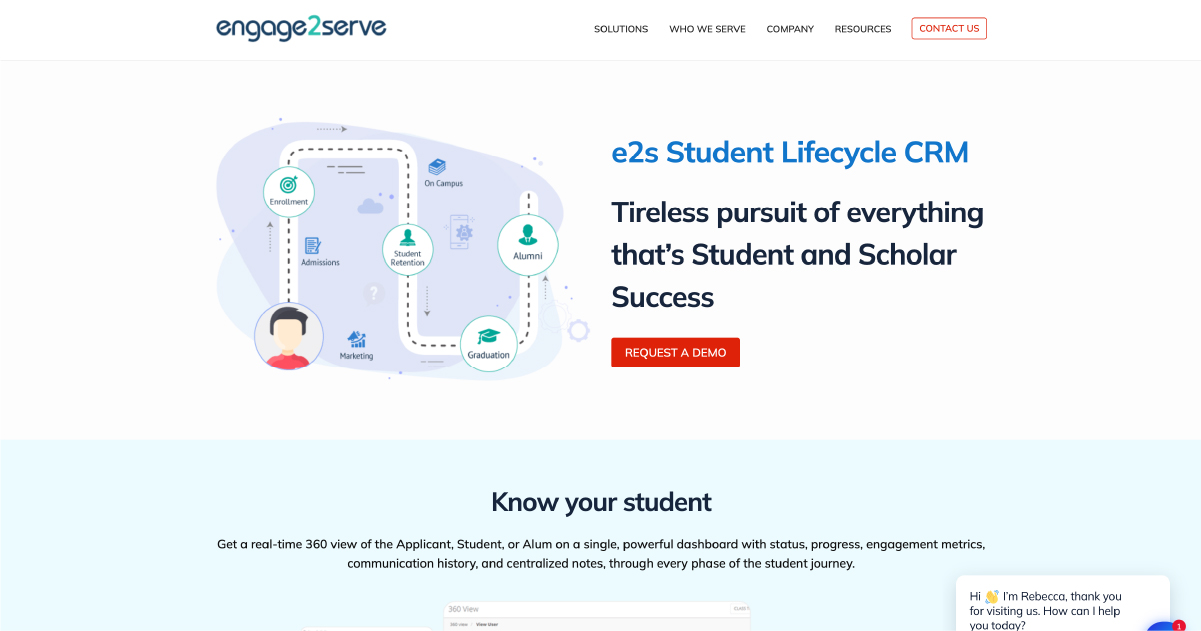
Focus: Life-cycle CRM—from lead capture to alumni giving
Highlights:
- Early alert case management, mobile-first design, and 360° student profiles.
- Ideal for smaller to mid-sized institutions seeking rapid implementation and robust student engagement features.
How to Select the Best CRM for Higher Education
Choosing the right CRM for your institution is more than just picking software—it’s selecting a long-term partner to transform student engagement, streamline operations, and boost outcomes. With numerous options available, how do you determine which CRM is the best fit? Here’s a step-by-step approach to help you evaluate and choose the best CRM for your higher education needs.
1. Define Your Goals and Priorities
Start by identifying your primary needs:
- Are you focused on boosting enrollment?
- Do you need better tools for student retention?
- Is alumni engagement a top priority?
- Knowing your goals will help narrow down your CRM options.
2. Look for Higher Ed-Specific Features
The best CRMs for universities come with education-specific tools like:
- Application and enrollment workflows
- Integration with SIS and LMS platforms
- Early alert systems for at-risk students
- Event and communication tracking
- Mobile responsiveness for student access
3. Prioritise Integration Capabilities
Your CRM should easily integrate with:
- Student Information Systems (SIS)
- Learning Management Systems (LMS)
- Email, SMS, and social media tools
- Finance, HR, and ERP systems
Seamless integration avoids silos and ensures a 360° view of each student.
4. Check Customisation & Scalability
Choose a CRM that:
- Allows custom workflows and reporting
- Can scale with your institution’s growth
- Offers modular features (you pay for what you use)
5. Evaluate User-Friendliness & Support
A robust CRM is useless if staff won’t use it. Look for:
- Intuitive UI/UX
- Mobile-friendly dashboards
- Onboarding support, training, and 24/7 customer service
6. Analyse Cost vs ROI
Compare pricing models—subscription-based, per-user, or institutional license—and weigh them against expected ROI like:
- Higher enrollment rates
- Lower dropout rates
- Reduced administrative burden
7. Learn from Real-World Case Studies
Look at what peer institutions are using. For example:
- Georgia State University uses CRM to improve retention by 10%+
- BITS Design School increased applications by 70% with Salesforce CRM
Tips for CRM Software Implementation in Higher Education
- Set clear goals and KPIs before starting the implementation.
- Involve all key departments early, including admissions, marketing, advising, and alumni.
- Audit, clean, and organise your data before migration.’
- Begin with essential features and gradually expand.
- Avoid over-customising the system in the initial phase.
- Provide role-specific training for all user groups.
- Designate CRM champions in each department to ensure smooth adoption.
- Ensure seamless integration with SIS, LMS, and email systems.
- Clearly communicate benefits to encourage user buy-in.
- Set up strong post-launch support and troubleshooting.
- Track metrics regularly to measure impact and improve.
- Collect user feedback and optimise workflows continuously.
- Celebrate quick wins to boost morale and adoption.
- Ensure leadership support for long-term success.
- Choose a CRM vendor with higher-ed experience and responsive support.
Summary
Today’s students expect hyper-personalised, tech-first experiences—and CRMs (Customer Relationship Management systems) are making that possible across higher education. Once a corporate sales tool, CRMs are now critical to how colleges recruit, engage, and retain students.
The global CRM market in higher education is skyrocketing—from $2.1 billion in 2023 to $9.1 billion by 2031. And for good reason. Institutions using CRMs have reported up to 30% higher applicant engagement, 25% faster admissions, and improvements of 10% or more in retention.
Take Georgia State University—they boosted retention by identifying at-risk students early through CRM data—or BITS Design School, which saw a 70% increase in applications using Salesforce.
Beyond recruitment, CRMs personalise communication, streamline workflows, and break down data silos across departments. Integrated with SIS and LMS systems, they enable smarter, faster student support—automatically.
Platforms like Salesforce Education Cloud, Slate, and Element451 are leading this digital transformation. But picking the right CRM is key. Institutions must prioritise integration, scalability, user adoption, and long-term ROI.
Bottom line? CRMs are no longer optional. In an increasingly competitive and digital-first landscape, they’re the engine driving student success from prospect to alum.

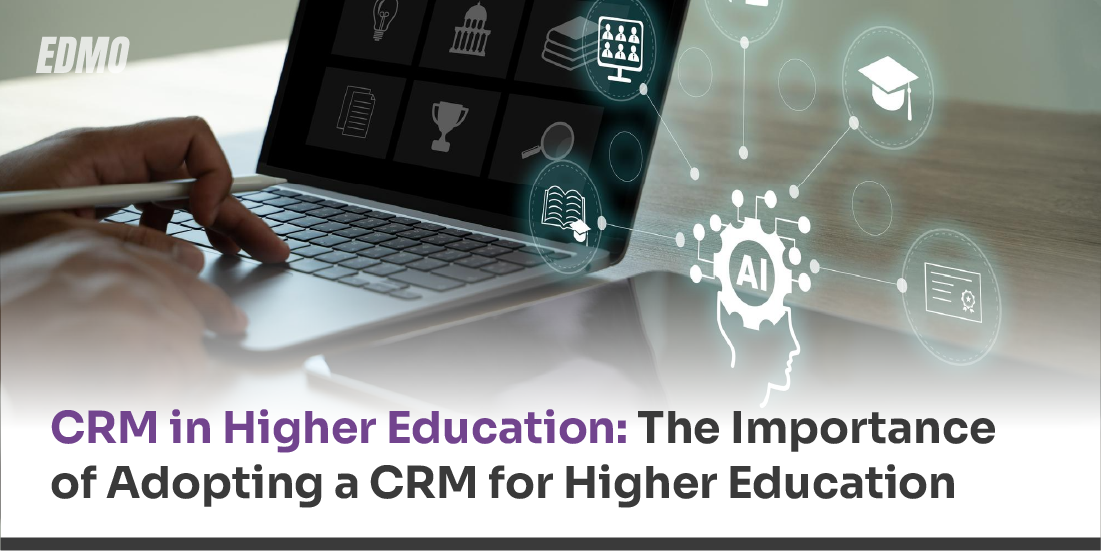
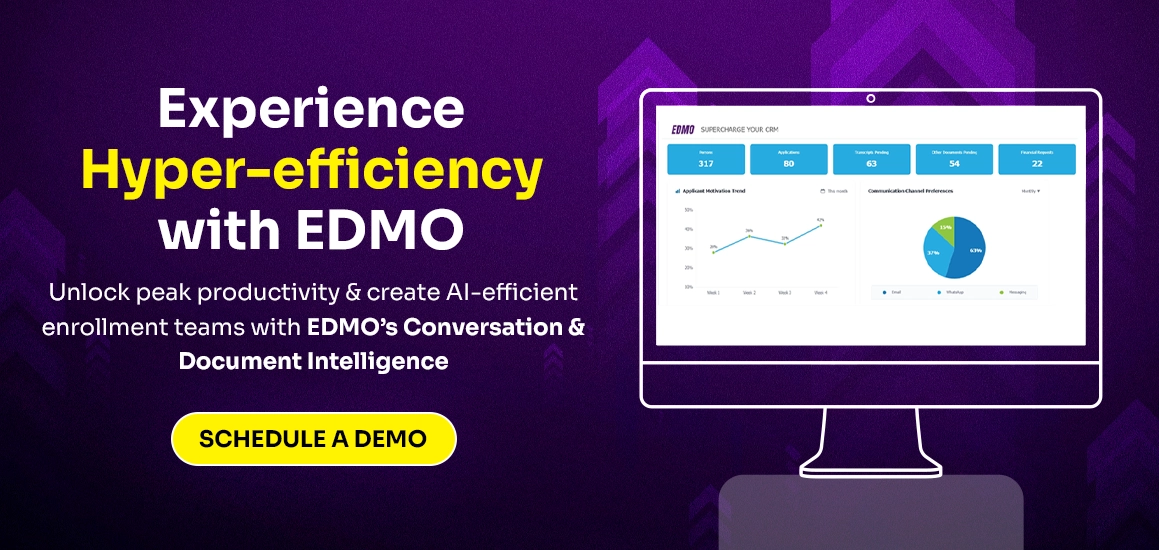




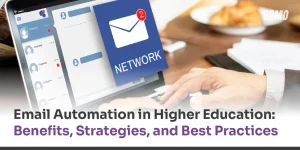
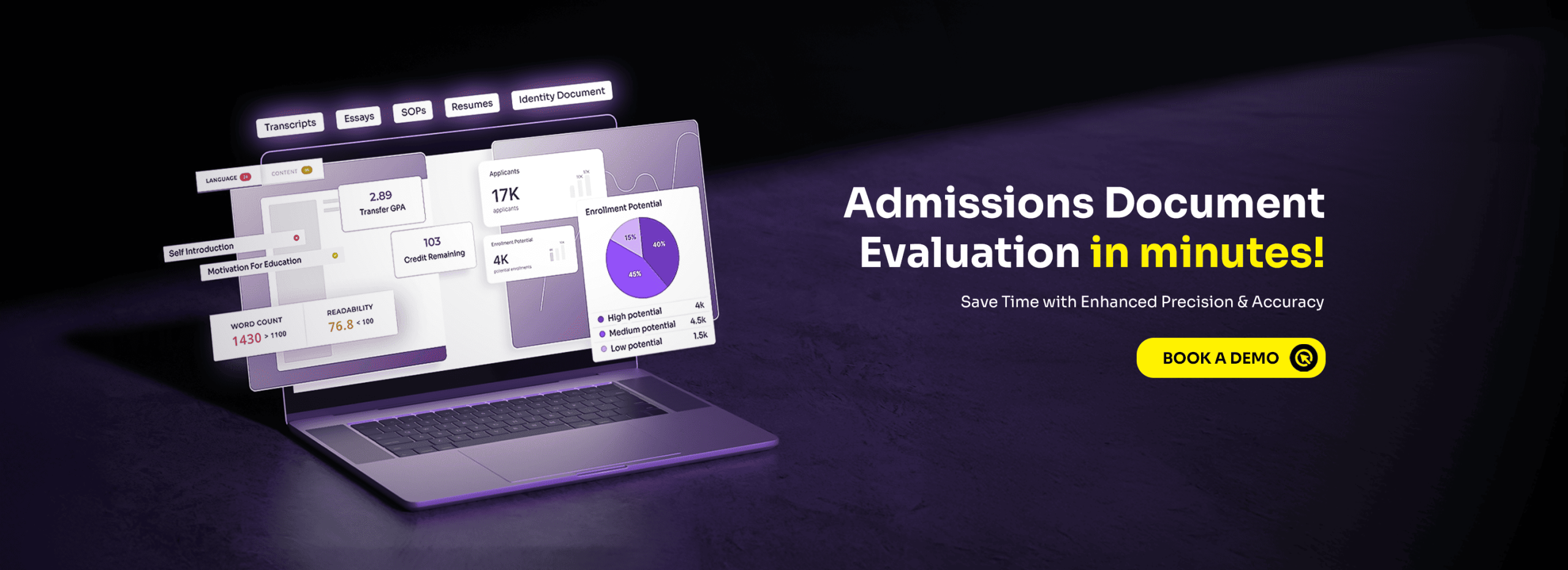

No comments yet. Be the first to comment!
Leave a Comment